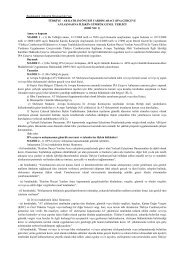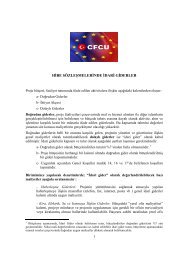Project Cycle Management Training Handbook - CFCU
Project Cycle Management Training Handbook - CFCU
Project Cycle Management Training Handbook - CFCU
Create successful ePaper yourself
Turn your PDF publications into a flip-book with our unique Google optimized e-Paper software.
14<br />
<strong>Project</strong> <strong>Cycle</strong> <strong>Management</strong> <strong>Training</strong> <strong>Handbook</strong><br />
2.4 Summary<br />
� The way in which projects are planned and carried out follows a<br />
sequence that has become known as the project cycle. It provides<br />
a structure to ensure that stakeholders are consulted and relevant<br />
information is available, so that informed decisions can be made<br />
at key stages in the life of a project.<br />
� The six phases in the project cycle are progressive. Each phase<br />
leads to the next. Information is required at each phase in order<br />
that sound decisions are made before progressing to the next<br />
phase. The cycle means that lessons from completed projects are<br />
used to improve future projects.<br />
� The separation of the Identification and Formulation phases is<br />
particularly important. By adhering to the identification phase, the<br />
relevance of project ideas can be systematically established before<br />
the preparation process is too far advanced for the idea to be<br />
dropped.<br />
� <strong>Project</strong> <strong>Cycle</strong> <strong>Management</strong> (PCM) was introduced by the<br />
European Commission in the early 1990’s to improve the quality<br />
of project design and management and thereby to improve aid<br />
effectiveness. PCM integrates the phases of the cycle so that key<br />
issues are examined systematically.<br />
� PCM brings together aid management principles, analytical tools<br />
and techniques, and applies them within the structured decisionmaking<br />
process of the project cycle to ensure that projects are<br />
relevant to the real needs of beneficiaries, and are feasible and<br />
sustainable.<br />
� The main design and management tool used within PCM is the<br />
Logical Framework Approach. To be used effectively, it must be<br />
supported by other tools for technical, economic, social and<br />
environmental analysis.<br />
Add your own notes here…





